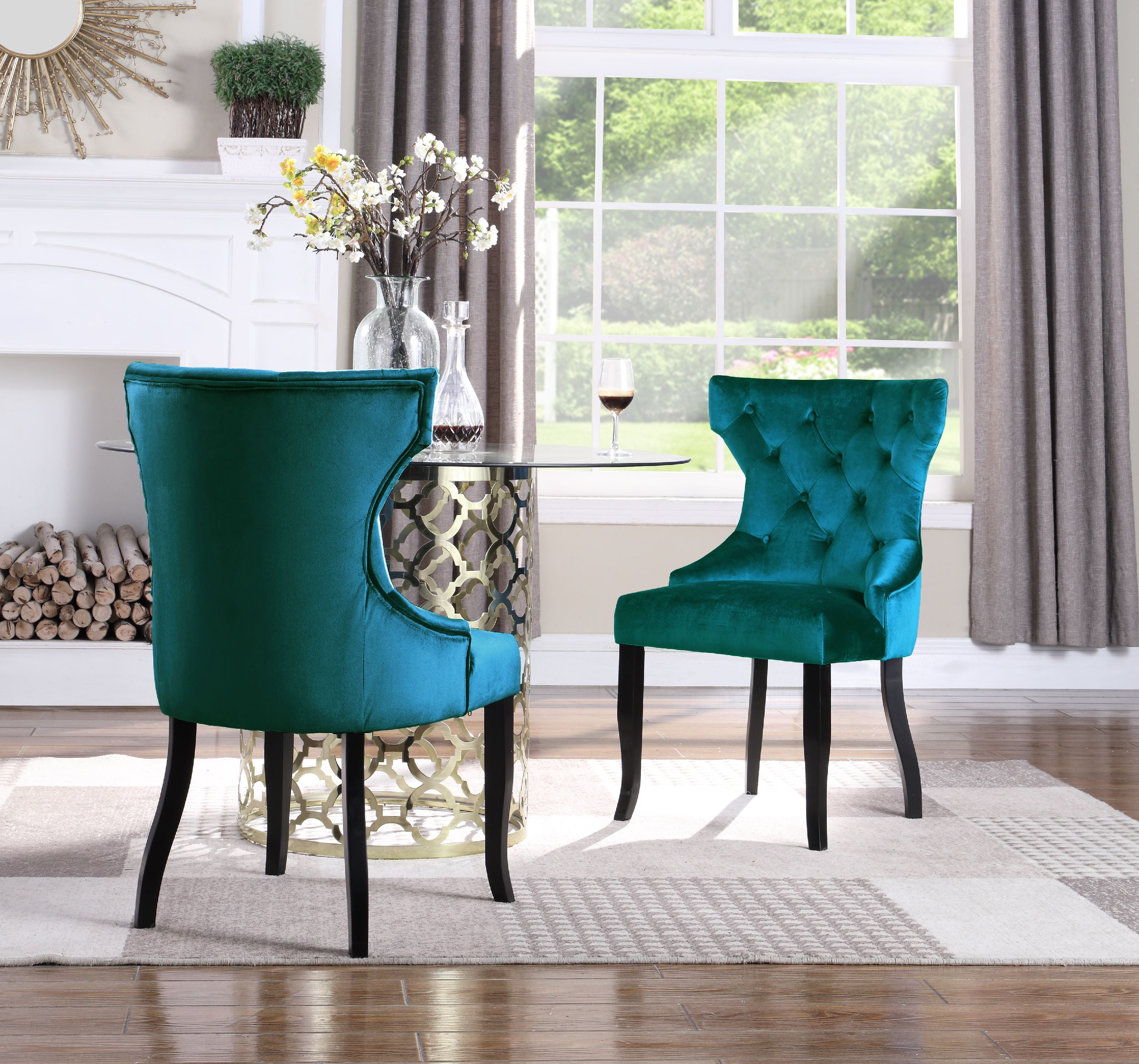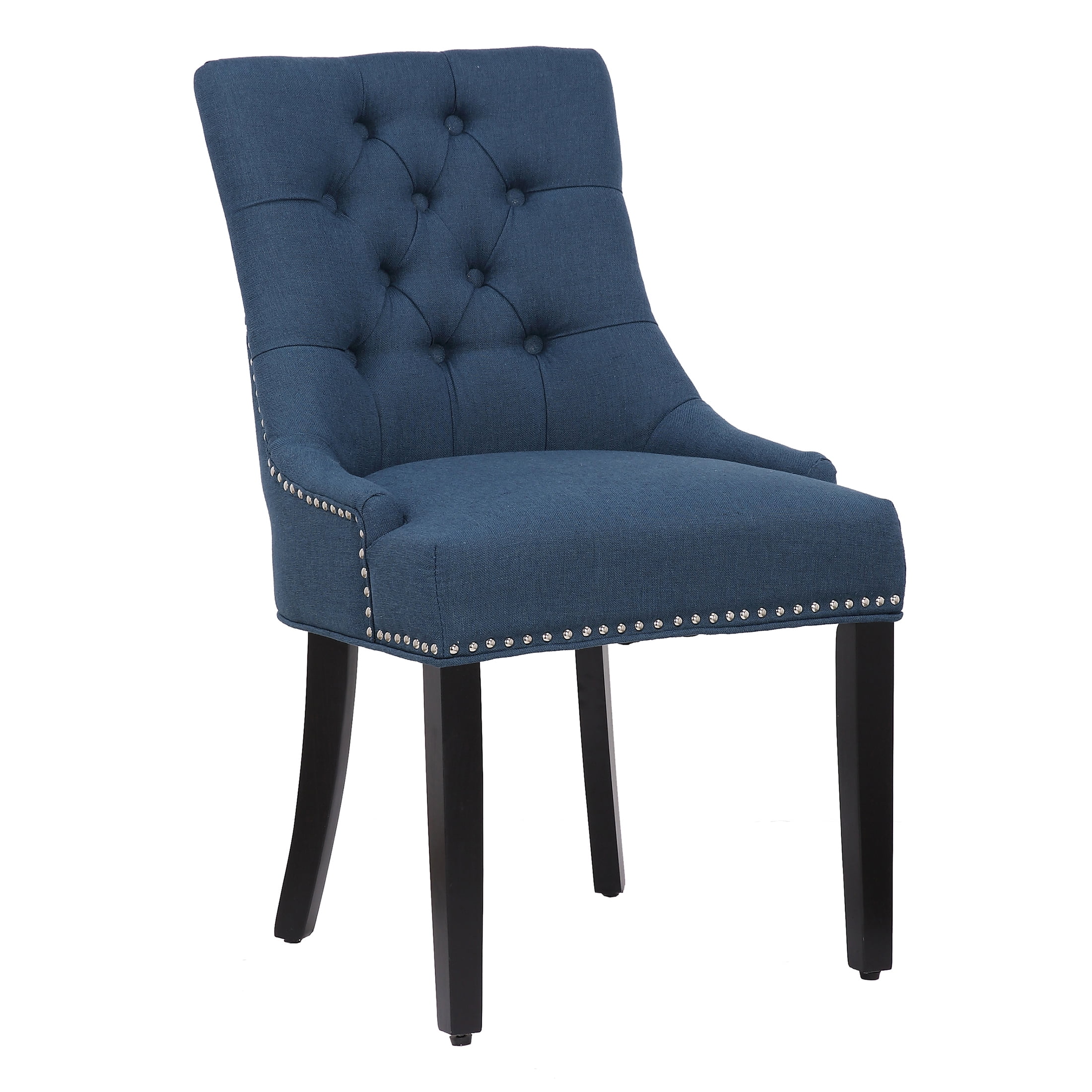Design & Aesthetics of Blue Wingback Dining Chairs

Blue wingback dining chairs offer a captivating blend of comfort and style, seamlessly integrating into diverse interior design schemes. Their versatility stems from the myriad variations in design and the inherent elegance of the wingback silhouette, coupled with the calming and adaptable nature of blue hues. The following exploration delves into the nuances of design, color, and stylistic integration of these popular chairs.
Variations in Design and Style
The beauty of blue wingback dining chairs lies in their adaptability. Numerous design elements contribute to their unique character, allowing for seamless integration into various decor styles. The following table highlights key variations:
| Style Name | Back Shape | Leg Style | Notable Features |
|---|---|---|---|
| Traditional | High, rounded, often with deep tufting | Tapered, cabriole, or straight | Ornate details, possibly carved wood, rich fabrics |
| Modern | Sleek, streamlined, potentially lower profile | Sleek, tapered, often metal or minimalist wood | Clean lines, simple upholstery, potentially bold color blocking |
| Farmhouse | Slightly rounded, often less structured than traditional | Straight, sturdy, possibly distressed wood | Natural fabrics like linen or cotton, possibly a lighter blue shade |
| Mid-Century Modern | Slightly curved, often with a defined waistline | Tapered, often angled or splayed | Simple lines, potentially walnut or teak wood, mid-tone blue upholstery |
Shades of Blue and Their Aesthetic Impact
The shade of blue chosen significantly influences the overall aesthetic. A deep navy blue exudes sophistication and formality, perfect for a traditional or even a dramatic modern setting. Lighter shades, such as sky blue or powder blue, create a more airy and relaxed atmosphere, suitable for farmhouse or coastal styles. A mid-tone blue, such as a denim or teal, offers versatility, complementing both modern and transitional spaces. The intensity of the blue also matters; a saturated blue commands attention, while a muted blue provides a calming backdrop.
Versatility in Different Room Styles
Blue wingback dining chairs effortlessly adapt to various interior design styles. In a traditional dining room, a deep navy blue chair with intricate detailing and rich fabric would complement dark wood furniture and ornate accessories. For a modern space, a sleek, light blue chair with clean lines and simple upholstery would pair well with a glass dining table and minimalist décor. In a farmhouse setting, a light blue chair upholstered in linen would complement a wooden table, rustic accents, and a neutral color palette. The versatility of the chair is amplified by the diverse options available in materials, from velvet to linen, which further enhance its adaptability to diverse aesthetic preferences.
Market & Consumer Trends for Blue Wingback Dining Chairs

The market for blue wingback dining chairs reflects a dynamic interplay of color psychology, evolving design aesthetics, and shifting consumer lifestyles. Understanding these trends is crucial for manufacturers and retailers seeking to capitalize on this niche within the broader furniture market. This section will explore current market trends, influential factors, and a potential marketing strategy.
Popular Styles and Price Points, Blue wingback dining chair
Current market trends indicate a strong preference for various styles of blue wingback dining chairs, catering to diverse tastes and budgets. Mid-century modern designs, characterized by clean lines and tapered legs, remain popular, particularly in shades of navy and teal. These styles often command a mid-range price point, appealing to a broad demographic of homeowners. At the higher end of the market, bespoke or handcrafted chairs featuring intricate detailing and luxurious fabrics, such as velvet or linen, are sought after by discerning consumers willing to invest in high-quality furniture. Budget-friendly options, frequently made from manufactured materials, offer a more accessible entry point for those seeking the style without the premium price tag. These budget options often feature simpler designs and less durable materials.
Factors Influencing Consumer Preferences
Several factors contribute to the growing popularity of blue wingback dining chairs. Color psychology plays a significant role; blue is often associated with tranquility, calmness, and sophistication, making it a desirable choice for dining spaces intended for relaxation and conversation. The wingback design itself offers a sense of comfort and enclosure, enhancing the overall feeling of the dining area. Current design trends favor a blend of classic and contemporary elements, and the blue wingback chair successfully bridges this gap. Lifestyle choices also influence purchasing decisions; consumers seeking a more formal dining experience might opt for a richer blue velvet chair, while those with a more casual style might prefer a lighter blue linen chair.
Target Audience and Marketing Campaign
A hypothetical marketing campaign for a new line of blue wingback dining chairs would target young professionals and established homeowners aged 25-55, with a focus on those interested in mid-century modern and transitional design styles. The campaign’s overall tone would be sophisticated yet approachable, emphasizing both the aesthetic appeal and the functional comfort of the chairs. Visual elements would showcase the chairs in stylish dining settings, highlighting their versatility and ability to complement various interior design schemes.
Embrace the serenity. Dine in style.
Blue: the new classic.
Comfort meets sophistication.
The campaign would utilize a multi-channel approach, including social media marketing with high-quality photography and video content, collaborations with interior design influencers, and targeted online advertising. Print advertisements in home décor magazines would further extend the campaign’s reach. The visual aesthetic would be clean, modern, and aspirational, using natural light and neutral backgrounds to highlight the chairs’ color and design.
